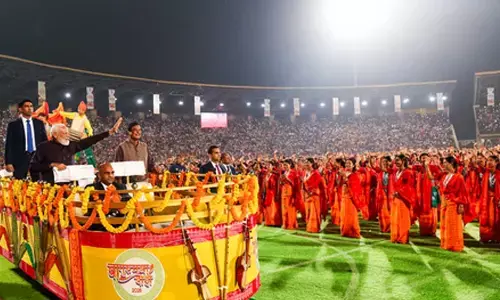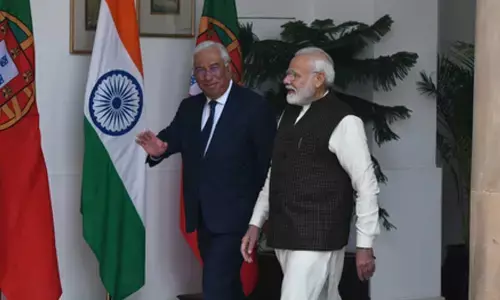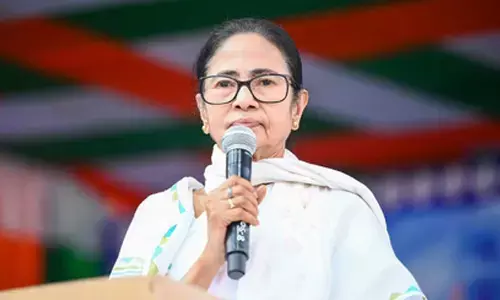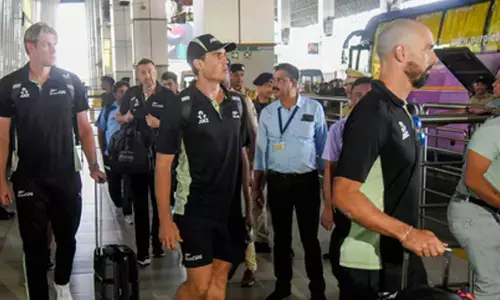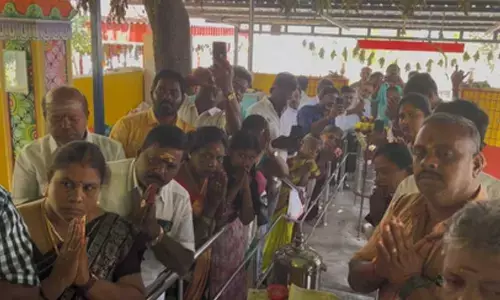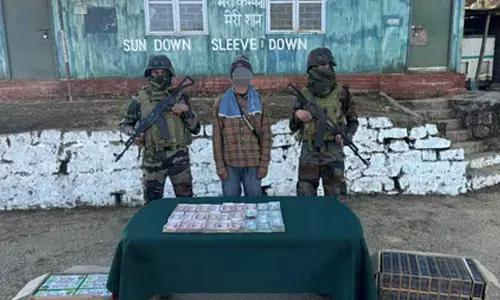Sanjay’s chariot
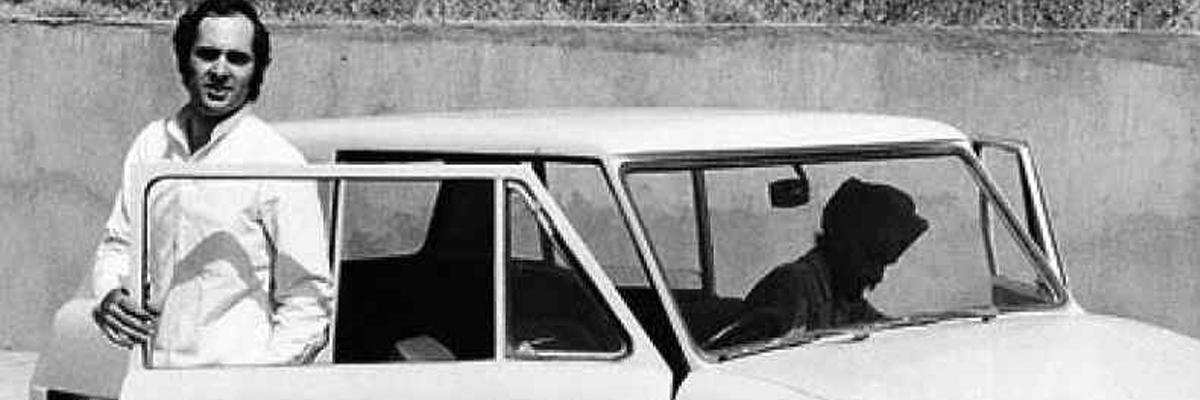
With the declaration of the Emergency, Sanjay cast a large shadow over the nation He held no official position, yet he wielded immense power Ministers, ambitious Congress party politicians and businessmen, administrators, and police officials competed to win his favour His command and influence, second only to Indira, was the culmination of a process that began with his Maruti automobile ventur
With the declaration of the Emergency, Sanjay cast a large shadow over the nation. He held no official position, yet he wielded immense power. Ministers, ambitious Congress party politicians and businessmen, administrators, and police officials competed to win his favour. His command and influence, second only to Indira, was the culmination of a process that began with his Maruti automobile venture.
In the Mahabharata epic, Sanjaya is a charioteer and advisor to the blind king Dhritarashtra. In the battlefield of Indian politics, Sanjay Gandhi made his foray with his motorized chariot, the Maruti, named after the son of the wind god. In 1968, the prime minister’s son sought an industrial license to manufacture a small car he later called the Maruti. He was only twenty-two years old at the time.
Two years later, the government issued him a letter of intent. It immediately plunged the mother and her son into a controversy. Sanjay had no background in automobile manufacturing. He had never run a business. What were his qualifications, aside from being the prime minister’s son? How was his project chosen over others? With industrial licenses tightly controlled in the Indian economy, the granting of a letter of intent to Sanjay caused an uproar. Members of the opposition parties thundered in the Parliament that the whole thing stank of rank cronyism.
Undaunted, Indira and Sanjay closed ranks. She defended his entrepreneurship and he pressed on with his Maruti project. When the 1975 Allahabad judgment thrust her political future into an unprecedented crisis, Sanjay rose to the top as a fearless and ruthless lieutenant who took the battle to Indira’s opponents. He was not even thirty years old. Yet the prime minister’s senior ministerial colleagues, chief ministers, Congress party leaders, high-ranking administrators and bank officials, tax and intelligence authorities, and police officers rushed to carry out his commands. Ambitious and unscrupulous men and women outbid each other in professing their loyalty to win his favor.
Propagandists plastered the city walls with his photographs and sycophants welcomed him with giant cutouts of his figure, clad in white khadi kurta-pajama, a shawl draped over his shoulder, wearing dark-rimmed glasses below his receding hairline. The aspiring automobile entrepreneur had become Indira’s most powerful advisor.
Sanjay’s meteoric rise to power is shrouded in gossip and speculation. Since he did not grant many interviews and left no diary or private papers (at least none available in the public domain), much of what we know about him consists of his record in the period leading up to and during the Emergency.
Vinod Mehta used the little public evidence that exists and interviewed his acquaintances to piece together a biography, seeking clues to his motivations and actions during the Emergency in the formative influences of his childhood and adolescence. Obviously, it was unusual to grow up under the towering shadow of his grandfather Nehru, who adored and spoiled his grandchildren Sanjay and Rajiv. So was the fact that his parents were estranged and lived separately. Nevertheless, the brothers seemed to have enjoyed a warm relationship with their father, Feroze Gandhi.
At the age of ten, Sanjay was sent to the elite Doon School, where Rajiv was already enrolled. At Doon, he displayed no particular talent or interest and was apparently unhappy. Indira withdrew him from the boarding school soon after Feroze died in 1960. The death of his father when Sanjay was only fourteen left him growing up under a mother who was increasingly preoccupied with her duties as her father’s hostess and her own growing political career. He enrolled as a day- scholar at Delhi’s St. Columba’s School, from where he graduated. Stories of his teenage years in Delhi portray him as a spoiled brat, stealing cars for joyrides and then abandoning them.
After graduating from high school, Sanjay decided not to join a university. Instead, he wanted to pursue his passion for automobiles and mechanical things. Accordingly, privileged contacts arranged his enrollment in the Rolls Royce apprentice program at Crewe in 1964.
In a 1966 letter to P. N. Haksar, who was then deputy high commissioner in London, Indira said that Sanjay felt he had learned all that the Rolls Royce apprenticeship had to offer. She asked Haksar to find something for him in London, remarking that Sanjay was lonely in Crewe: “He is a different type from Rajiv— more practical in some ways but yet more shy and diffident in others.” She was right to worry about him. He had claimed to have already learned all there was to learn at Rolls Royce. The feeling was mutual. Rolls Royce representatives paid a visit to the Indian High Commission in London in 1967 and suggested that any further time spent by Sanjay at the company would be “mutually unprofitable.” He returned to India that year without completing his apprenticeship.
The portrait that emerges of Sanjay from his youth is a life of privilege. It is what protected his teenaged pranks from getting him into trouble and gave him the freedom to leave his automobile apprenticeship midway without consequences. He showed no interest in politics, nothing that would hold clues for his later role during the Emergency. Sanjay was Nehru’s grandson, but he showed no interest in books or ideas. His knowledge of society and politics was superficial. Yes, he was used to the privileges of power, as was his brother, Rajiv. But it is the combination of being accustomed to power with a passion for cars that proved to be a fateful one. This is what brought him into the public eye in 1968 when the press reported that Sanjay had submitted an application for an industrial license to manufacture a small car. It was to be a completely indigenously produced automobile priced at an affordable six thousand rupees.
The Maruti project consumed Sanjay during the next several years. With the blessing of the prime minister, he could indulge his passion for motorized things. He would typically leave home early in the morning and return late in the evening, spending the whole day tinkering with his Maruti. This left his wife, Maneka, whom he married in 1974, with nothing much to do in the prime minister’s household.








